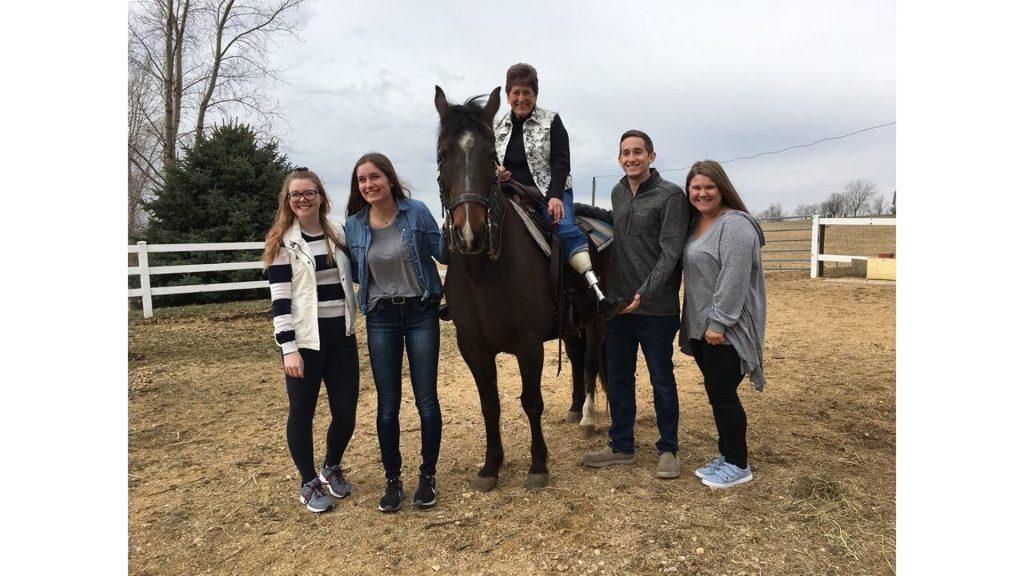It was a perfect match for an Iowa woman and a team of University of Iowa engineering students: They needed a project, and she needed to ride her horse again.
UI students Paighton Schrupp, Madison Chrisman, Glen Schoenbeck Jr., and Elizabeth Niedert, strangers at the start of their yearlong class, were grouped together to complete a mandatory senior project to graduate. They found their bioengineering project in northeastern Iowa just outside Dubuque.
Zwingle, Iowa, resident Mona Metcalf lost a leg in a farm accident in 1994. For the past couple of years, she has been having trouble partaking in one of her favorite pastimes, riding her horse, Rebel. She needed a way to keep the top part, the socket, of her prosthetic leg in place while riding.
Aulanda Krause, Metcalf’s daughter, saw the toll this took on her mother with increased reliance on a wheelchair and waning interest in activity, a stark contrast to how she used to be.
Krause found a potential solution when she heard about the UI engineering students who helped a little boy ride his bike with a prosthetic arm. She applied last summer to see if the students would take the case.
“If it didn’t work out, all that mattered is that someone was trying,” Krause said.
Krause and Metcalf were contacted while they were in Iowa City so Metcalf could have emergency surgery for an infection on what remained of her leg. The project was approved, and a partnership was born.
For nine months, team “Rebel with a Cause” worked on a solution to get Metcalf back on her horse again. The students went through each step from investigating and designing to fabricating and testing.
The problem with Metcalf’s leg was that while horseback riding, the prosthetic would spin in place at the socket, compromising the integrity of her skin. The students designed an attachment for her leg to keep the socket in place and keep the movement farther down the rest of the prosthetic.
Krause and Metcalf met with the students numerous times during the year to find a solution, developing relationships along the way.
“It’s really given my mom something to look forward to,” Krause said. “She calls them her kids.”
For the students, it was a new learning experience both with the problem solving and with each other. Chrisman said they had never really worked with this kind of problem-solving outside of the university before.
“I think if we didn’t work as closely together, we wouldn’t have been as successful as we were,” Schoenbeck said.
The students said they were surprised they gelled as well as they did, with this being their first collaborative project.
“A lot of times in classes we’re solving problems, but it’s typically some kind of theoretical problem that you’re putting a solution to,” Niedert said. “This is the first time we’re there for the whole process with an actual person trying to solve their problem.”



